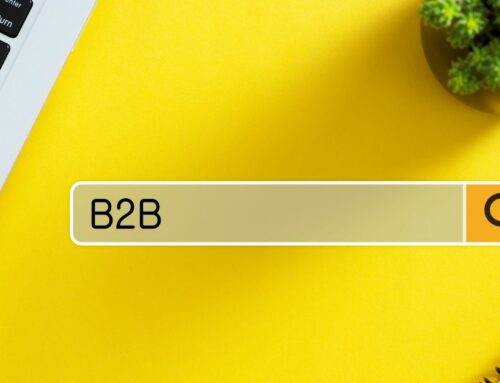Read time: 7 mins
When your next project deadline is too close for comfort and stakeholders expect actionable insights that drive real business decisions, the quality of your B2B market research can make or break your success. The difference between mediocre data and insights that transform strategy often comes down to execution details that many research teams overlook.
Key Takeaways
- Strategic sample architecture is critical: design outreach to reflect organizational complexity, company size, region, and communication preferences.
- Questionnaire design must respect business context: align with decision-making processes, use precise terminology, and integrate built-in quality controls.
- Multi-mode methodology delivers deeper insights: combine online surveys, phone interviews, qualitative methods, and AI tools for full coverage.
- Holistic integration drives impact: sampling, questionnaire design, and methodology should reinforce one another to generate actionable, strategic insights.
We talked with three industry experts, and these were their contributions to maximizing B2B survey results. Their insights reveal why some research projects deliver game-changing data while others fall flat, despite similar budgets and timelines.
Secret #1: Strategic Sample Architecture Beats Random Outreach
The foundation of exceptional B2B market research lies in thoughtful sample design that goes far beyond basic demographic targeting. Your sample architecture should account for the complexity of B2B decision-making processes where respondents represent multiple stakeholders, varying levels of authority, and different functional perspectives within their organizations. This means your sampling strategy needs to reflect these organizational dynamics rather than treating all respondents as equivalent data points. Company size creates distinct participation patterns that require different approaches. For example, enterprise executives prefer shorter, focused surveys through specific channels, while mid-market professionals engage more deeply with comprehensive questionnaires that demonstrate understanding of their challenges, and small business owners respond best to surveys that respect their time constraints while acknowledging their hands-on involvement across multiple business functions.
Geographic considerations play a crucial role because response patterns vary significantly across regions due to cultural differences, business practices, regulatory environments, and market maturity levels. The most successful projects incorporate multiple touchpoints and communication channels within their sample design because email-only approaches often miss key decision-makers who prioritize phone outreach, LinkedIn engagement, or traditional mail. This multi-channel approach ensures you reach respondents who might otherwise remain invisible in your data, creating a more complete picture of your target market.
Secret #2: Questionnaire Design that Respects Business Context
B2B professionals operate within complex organizational contexts that significantly influence how they interpret and respond to survey questions, making questionnaire design far more nuanced than consumer research. Your question flow should mirror how B2B professionals think about their challenges and decision-making processes by following logical business sequences rather than abstract research frameworks. This means starting with a broader organizational context before drilling down into specific tactical details. This approach not only improves response quality but also demonstrates that you understand their business environment. Language precision becomes critical because industry terminology that resonates with one functional area might confuse another, requiring surveys that translate across different roles while maintaining the specificity needed for actionable insights. Nothing will annoy a business professional more than using improper industry terminology or showing a lack of understanding of their industry.
Response options must reflect the reality of B2B decision-making timelines and processes where committee decisions, budget cycles, and approval processes drive outcomes rather than individual preferences. Your scaling and multiple-choice options should acknowledge these organizational dynamics, while skip logic adapts dynamically based on company size, industry, and functional responsibility to ensure every respondent receives relevant questions matching their actual experience and authority level. Quality control measures need to be built directly into the questionnaire design because B2B respondents often delegate survey completion or rush through questionnaires between meetings, making attention checks, consistency verification, and open-ended validation questions essential for identifying low-quality responses before they compromise your data integrity.
Secret #3: Multi-Mode Methodology Integration for Complete Coverage
The most successful B2B market research projects combine multiple data collection methodologies to overcome the inherent limitations of any single approach, going beyond simply offering surveys through different channels to strategically designing each methodology for capturing different types of insights and respondent segments. Online surveys excel at reaching broad samples and collecting standardized quantitative data. Still, they often miss the contextual depth that drives strategic decision-making, while phone interviews provide that missing context and reach respondents who might not engage with digital surveys. Face-to-face interactions through focus groups or individual interviews remain irreplaceable for understanding complex B2B dynamics because they allow researchers to explore unexpected themes, clarify ambiguous responses, and observe non-verbal cues that reveal important context about respondent perspectives. Leveraging AI in today’s data collection platforms can provide opportunities to get deep insights at scale.
Digital ethnography and social listening provide valuable context for traditional survey findings by revealing how B2B professionals actually discuss industry challenges in their natural professional environments, helping validate survey responses and identify topics that respondents might not think to mention in formal research settings. The integration strategy must account for different organizational comfort levels with various research methodologies because some companies readily participate in online surveys but restrict employee participation in phone interviews due to productivity concerns. In contrast, others prefer the personal touch of phone or face-to-face interactions. Timing coordination across methodologies requires careful planning to avoid respondent fatigue while maximizing the value of each interaction, with the most effective approach using quantitative methods to identify key segments and themes before deploying qualitative methodologies to explore those findings in greater depth with carefully selected participants.
Putting It All Together
Maximizing B2B market research survey results requires creating synergy between strategic sample architecture, context-aware questionnaire design, and integrated methodology approaches where your sample design informs your questionnaire structure, which then guides your methodology selection. This holistic approach ensures that every element of your research design reinforces the others rather than working at cross-purposes while maintaining flexibility throughout the research process to adapt based on early findings rather than rigidly following predetermined protocols. Success depends on creating a research framework that captures the complexity and nuance of real B2B decision-making while delivering insights that stakeholders can effectively implement.
When you combine these three secrets, your B2B market research transforms from simple data collection into strategic intelligence that drives meaningful business outcomes. The goal isn’t perfect execution of a single methodology but rather building an integrated approach that acknowledges the realities of how B2B professionals operate within their organizational contexts.





